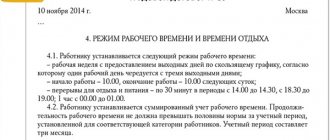How long to work in 2021
Traditionally, working hours standards for 2021 depend on the number of days in 2021. Moreover, these are not only calendar days, but also working days. And also weekends and holidays.
- “What are the postponements of weekends in 2021”
Below is a table with estimated working hours for 2020.
In this 2021 production calendar with working hours, it is given for months, quarters and 2021 as a whole for 40-, 36- and 24-hour work weeks. The number of working days and days off is taken with a 5-day work week with two days off. Also in the last line is the average monthly working time for 2020.
| Periods 2021 | Amount of days | Working hours (in hours) | ||||
| Calendar | Workers | Weekends and holidays | with a 40 hour work week | with a 36-hour work week | with a 24-hour work week | |
| January | 31 | 17 | 14 | 136 | 122.4 | 81.6 |
| February | 29 | 19 | 10 | 152 | 136.8 | 91.2 |
| March | 31 | 21 | 10 | 168 | 151.2 | 100.8 |
| I quarter | 91 | 57 | 34 | 456 | 410.4 | 273.6 |
| April | 30 | 22 | 8 | 175 | 157.4 | 104.6 |
| May | 31 | 17 | 14 | 135 | 121.4 | 80.6 |
| June | 30 | 21 | 9 | 167 | 150.2 | 99.8 |
| II quarter | 91 | 60 | 31 | 477 | 429 | 285 |
| 1st half of the year | 182 | 117 | 65 | 933 | 839.4 | 558.6 |
| July | 31 | 23 | 8 | 184 | 165.6 | 110.4 |
| August | 31 | 21 | 10 | 168 | 151.2 | 100.8 |
| September | 30 | 22 | 8 | 176 | 158.4 | 105.6 |
| III quarter | 92 | 66 | 26 | 528 | 475.2 | 316.8 |
| October | 31 | 22 | 9 | 176 | 158.4 | 105.6 |
| November | 30 | 20 | 10 | 159 | 143 | 95 |
| December | 31 | 23 | 8 | 183 | 164.6 | 109.4 |
| IV quarter | 92 | 65 | 27 | 518 | 466 | 310 |
| 2nd half of the year | 184 | 131 | 53 | 1046 | 941.2 | 626.8 |
| All 2021 | 366 | 248 | 118 | 1979 | 1780.6 | 1185.4 |
| Average monthly working hours | 164.9 | 148.4 | 98.8 | |||
Please note that working hours in January 2021 traditionally differ from other months due to the large number of New Year and Christmas holidays.
REFERENCE
In January 2021, with a 5-day work week with two days off – 17 working days and 14 days off.
The standard working hours in January 2021 will be:
- at 40 hours of work week: 8 hours × 17 days. = 136 h;
- at 36 hours of work week: 7.2 hours × 17 days. = 122.4 hours;
- at 24 hours working week: 4.8 hours × 17 days. = 81.6 hours
For more information about this, see “January 2020: how we rest and work.”
The effective working time of one average worker is determined based on the annual balance of working time (Table 24).
[p.192] To determine the annual number of days of work per worker, a working time balance is drawn up. [p.301] Example. The estimated cost of electrical installation work performed during the year is 4,000 thousand rubles, and the total labor costs are 56,000 man-days. The annual balance of working hours: weekends and holidays—116 days, vacations—15, absences due to illness—6, other absences—4 days. Determine the average number of workers and the annual output of the worker. [p.301]
Average planned useful annual fund one- 15 Working time balance one- 232 228 [p.50]
Calculate the annual balance of working hours in hours for one employee of the company according to the following calendar data in the planned year: 110 holidays and weekends 55% of the company’s employees have the right to regular leave of 24 working days, 45% - 18 working days of maternity leave per employee will be 20 days of study leave and sickness absence per employee will be 10 days per year 365 days, work shift duration 8 hours. [p.267]
Annual balance of working time in hours for one employee = (365-161.3) 8 = 1637.5. [p.514]
The annual production plan for a worker is established broken down by quarters and months, and the corresponding part of the annual assignment is taken into account in calculating the growth of labor productivity for the planned period (quarter, month). Annual, quarterly and monthly assignments are subsequently adjusted to reflect the actual work time balance. [p.236]
Initial data and problem statement. Draw up an annual balance of working time for one worker (according to plan and report) [p.125]
Estimates, operating budgets, plans for logistics and resource requirements, personnel, capital investments, production, labor, wages, economic performance indicators, consumption rates, calculations of fund sizes, overhead estimates, working time balances, summary table of key indicators and other components of the package of mandatory annual plan forms [p.104]
With a five-day workday, the standard working time (see Articles 42-45 of the Labor Code) must be ensured every calendar week or, if this is not possible, on average for the accounting period provided for by the schedule, i.e. the period of time within which it must be observed (on average ) the length of the working week established by law. Each calendar week, the 40-hour standard is implemented when the routine or schedule provides for a daily work duration of 8 hours, 5 days a week. The deficiency is repaid as it accumulates during the accounting period. For each employee and for the entire team of the organization, the number of hours of work according to the five-day workday schedule must be equal to the standard working hours for a given working year according to the calendar (schedule) of a six-hour working day. This means that for all employees of the organization (both with normal and shortened working hours) an annual balance of working hours must be ensured in terms of a six-day working week. [p.90]
Depending on production and local conditions, a sliding (flexible) schedule can be used in various versions with different working hours and rest periods. However, an indispensable condition for the applied schedules must be compliance with the annual balance of working hours. [p.465]
Shift schedules, depending on specific organizational and technical conditions, are drawn up for a certain accounting period, i.e., a period of time within which the (on average) length of the working week must be observed. At the same time, for all categories of workers, both with normal and reduced working hours, it must be ensured that the annual balance of working time is maintained, calculated according to the six-day working week calendar (18, paragraph 3, paragraph 1). [p.593]
The absenteeism indicator is calculated as the ratio of working time missed by employees during a period (year) to the overall balance of working time of the organization for the period. This indicator takes into account all absences from work - due to illness, time off at one’s own expense, absenteeism, except for vacations and forced time off at the initiative of the organization. In 1994, the total annual balance of working hours at the Karat plant was 798,000 hours, with 97,240 hours missed. Accordingly, absenteeism in 1994 was 12%. The absenteeism rate shows what percentage of productive time is lost during a period due to employees being absent from the workplace. To reduce absenteeism, the human department [p.329]
Annual balance of working time [p.147]
To determine the annual number of days off work per worker, a working time balance is drawn up according to the following approximate scheme (based on a six-day working week) [p.260]
| Table 21 Annual working time balance |
In order to determine the annual time fund of one worker, a working time balance is drawn up.
[p.193] Due to the calendar changing annually, with any one and the same (except for a six-day working week) work schedule (in particular, a single-shift work schedule with a shift duration of 8.2 hours with a five-day working week), deviations in that or the other side of the annual balance of working time that exists with a six-day working week, i.e. in some years (for example, in 1987) overwork occurs, and in others (for example, in 1988-1990) there is a shortfall in the workers’ norm hours. Therefore, all schedules of a five-day working week at enterprises and organizations, including single-shift modes with a shift duration of 8 hours 12 minutes, are subject to annual adjustment to a single annual standard of working time. This is achieved by working out the missing hours during the year, and in the case of overtime, providing employees with additional rest time for the working hours overworked during the year. [p.14]
The sources of data for the analysis are the planned balance of working hours (form No. 25-TP), reporting data -. quarterly f. No. 2-T and annual f. No. 9, one-time observation of the use of working time. [p.25]
In annual and quarterly plans, the development of a section usually begins with the calculation of the number of industrial production personnel, which is carried out by factories and workshops independently on the basis of current labor intensity standards and plans for their reduction, planned exceeding of production standards and the balance of working hours, headcount standards (or staffing ) auxiliary workers, specialists and managers, junior service personnel, as well as taking into account the advanced training of workers, co- [p.108]
Example 2. In a primary oil refining workshop, the labor intensity of all repairs of technological equipment for a year, determined according to time standards, is 28,000 man-hours, including category II - 4,000, III - 5,000, IV - 8,000, V - 11,000 people. h. The annual balance of working time per worker is 1836 hours, the average fulfillment of standards is 108%. [p.63]
Calculate the planned and actual annual balances of working time for one employee with a working day of 6 and 7 hours according to the data given below [p.96]
Annual balance of working time, hours 1620 1556 1864.1 1818.6 [p.96]
Below is an approximate annual balance of working time for one worker with a five-day working week. [p.204]
Shift schedules are drawn up for a specific accounting period, that is, a period of time within which the (on average) length of the working week must be observed. At the same time, for all categories of workers, both with normal and reduced working hours, it must be ensured that the annual balance of working hours is maintained. The accounting period can be a month, a quarter, or a year. Overtime or shortfall of normal working hours in a particular month cannot serve as a basis for revising the schedule if the overall balance of working time corresponds to the established norm of working hours during the accounting period and calendar year. [p.95]
The total duration of daily (shift) work of crew members during the month in all cases should not exceed the standard working hours of the monthly balance of working time. Monthly and annual flight time limits are established for flight personnel and maintenance personnel of aircraft crews. [p.421]
Shift schedules approved by the administration are brought to the attention of workers, as a rule, no later than a month before their implementation, and in the event of changes in the organization of production and working conditions - two months. The work of performers must be organized so that every week (or on average for the period provided for in the schedule) the legally established length of the working week and the annual balance of working time, calculated according to the six-day working week calendar, are observed. [p.416]
An equally important stage in the analysis of the use of working time is the study of the specific causes of intra-shift loss of working time and the identification of reserves for increasing shift working time. At the analyzed enterprise, a reduction in the average working day by 0.2 hours (see Table 1.3) indicates the presence of intra-shift losses of working time. In order to establish the specific causes of these losses, it is advisable to draw up a balance of shift working hours (Table 1.6). To compile this balance sheet, data from Form No. P-4 of the annual reporting, as well as timesheet data, are used. [p.18]
For all employees, both regular and short-time workers, schedules must maintain the annual balance of working and non-working time. [p.108]
The working time corresponding to this number of days, expressed in hours, represents the effective fund of working time. Thus, the effective fund is less than the nominal one for the period of absence from work due to illness, leave, maternity leave, leave for correspondence and evening students at universities and technical schools and for other reasons, as well as for the amount of time the working day is reduced for adolescents and nursing mothers . If, for example, out of 100 workers for whom the annual balance sheet is drawn up, 10 are entitled to a shortened working day of 7.2 hours, then the average working day for the case under consideration will be 8.08 hours [(90-8.18+ 10- 7.2)/100]. [p.36]
It can be seen from the balance sheet that the time worked by the worker during scheduled repairs is 78 of the annual working time fund. [p.194]
The power plant compiles a title list of capital repair objects in accordance with the funds allocated for the capital repair of the power plant's fixed assets. Drawing up an optimal annual repair plan for a power system is a complex and time-consuming task, since any placement of equipment repair time must take into account numerous and conflicting requirements, the impact of the repair schedule on the annual balance of labor of repair enterprises, fuel consumption and power balance in the power system. This problem can be successfully solved on the basis of the methodological provisions adopted in the USSR, taking into account the features of energy repair [p.17]
In the reproduction balance, the total mass of means of production (PI) created per year in the first division must correspond to the annual amount of depreciation of the III (C13) and depreciation of the II (C12) and 1st (Sp) divisions of social production. Each element of the matrix as a result determines the volume in the price (exchange) dimension of the compensation, consumption and accumulation funds created respectively C, V and M. But in this case, value is formed in the corresponding social costs, i.e. cost categories are depreciation, wages and the value of surplus labor time. Thus, in the macromodel, a deficit-free budget begins to form in the categories of costs and results. [p.384]
Determine the planned payroll and turnout number of turners to complete the annual work program presented in the table below. The structure of working time is taken according to the balance in table. 11.2. The coefficient of compliance with standards is 1.05. [p.96]
In the example given, the worker has 18 working days of vacation. Taking into account calendar days, it will be 21 days, including three Sundays. The balance shows only 15 days, since three Saturdays are already excluded from the annual calendar fund of time. The duration of additional vacations is calculated similarly. The remaining absences and losses are planned based on analysis for the reporting period and expected changes in the planning period. [p.40]
In paragraph 1 of the explanation of the State Committee for Labor and the All-Russian Central Council of Trade Unions dated April 8, 1967 No. 4/P-10 On some issues related to the transfer of workers and employees of enterprises, institutions and organizations to a five-day work week with two days off, in particular, it says Work schedules in depending on specific organizational and technical conditions, they are compiled for a certain accounting period, i.e., a period of time within which the length of the working week must be observed (on average). At the same time, for all categories of workers, both with normal and shortened working hours, it must be ensured that the annual balance of working time is maintained with a six-day working week. Overwork or shortfall of normal working hours (calculated according to the calendar of a six-day working week) in the corresponding month cannot serve as a basis for revising the schedule if the overall balance of working time corresponds to the established norm of working hours during the accounting period and calendar year. [p.14]
The balance of working time of one worker on an annual basis is an average statistical value. All types of legally permitted days and hours of non-work are averaged. Therefore, when using such a balance, the number of teams in which predominantly women are employed is underestimated, and for male teams it is unreasonably overestimated. The same can be said about the number of workers in areas with favorable and unfavorable working conditions. [p.58]
Determine the general and partial coefficients for the possible combination and release of an assistant driver and the annual savings in the wage fund. A photograph of working hours showed that the compressor operator for the absorbent supply has 245 minutes of free time from his main work, and his assistant has 240 minutes. The work is organized according to a four-brigade schedule. The tariff category of an assistant driver is III, the hourly tariff rate is 60.6 kopecks/hour. The average working time balance per worker is 173.5 hours [p.89]
The useful fund of working time is determined on the basis of an analysis of the balance of hours worked according to reporting data, relevant calculations and measures to reduce losses of working time. The approximate structure of the annual useful time fund of one worker is presented in table. 63. [p.168]
Drawing up an optimal annual repair plan for an energy interconnection is a complex and time-consuming task, since any placement of equipment repair time must take into account numerous and conflicting requirements, the impact of the repair schedule on the annual balance of the labor force of repair enterprises, fuel consumption and the power balance in the interconnection. [p.316]
Drawing up an optimal annual repair plan for an energy interconnection is a complex and time-consuming task, since when placing equipment in a particular location, numerous and conflicting requirements must be taken into account, the impact of the repair schedule on the annual balance of labor of repair enterprises, fuel consumption and power balance in energy interconnection. This problem can be successfully solved on the basis of methodological provisions adopted in the USSR, taking into account the peculiarities of energy repair production and modern computer technology. Optimal should be understood as a repair plan that, given the organization of repair maintenance of power plants adopted in the energy association (a given composition and placement of repair units, i.e., constant capital investments in the repair base), ensures the fulfillment of a given consumer load schedule with a reliability not lower than the standard and the planned volume repair work with minimal costs in the energy system (including fuel and power effects). [p.317]
How to determine working hours in 2020
As before, the calculation of working hours for 2021 is regulated by Order No. 588n of the Ministry of Health and Social Development of Russia dated August 13, 2009. It establishes the rules for calculating the norm of working time for certain calendar periods (month, quarter, year) depending on the established length of working time per week (5 days, 6 days, etc.).
It is important that the standard working time for 2020 calculated in this order applies to all work and rest regimes in 2020.
Note that for a six-day week, the standard working time is calculated according to a 5-day workweek schedule with two days off on Saturday and Sunday, based on the duration of daily work (shift).
The planned balance of working hours is...
Working time balance (hereinafter referred to as WB) is a system of economic indicators that characterize the resources of the working time of employees available to the enterprise (divided into homogeneous groups or the enterprise as a whole) and their use.
The planned BRV is calculated using the indicators planned for the current unfinished (or next) year. FBR is calculated in order to determine whether there is a reserve for increasing labor productivity. The calculation is carried out by correlating the number of workers with the rational use of their working time. The indicator is calculated in man-hours or man-days. At the same time, the planned time limit will make it possible to predict what the efficiency of using working time will be, and upon subsequent comparison with the reporting value, it will be possible to understand what influenced the deviation from the plan.
The calculation of the indicator is usually carried out in the context of one average employee or for a group of employees who share similar work schedules and the same length of vacation. Also, FBR is often calculated for the entire enterprise.
Features of 2021
According to the law, the duration of the working day or shift immediately before a non-working holiday is subject to reduction by 1 hour (Part 1 of Article 95 of the Labor Code of the Russian Federation).
In 2021, we will work 1 hour less on April 30, May 8, June 11, November 3, December 31.
That is, on the eve of the holidays May 1 and 9, June 12, November 4, 2020, as well as January 1, 2021.
When, by decision of the Government of the Russian Federation, a day off is moved to a working day, the duration of work on this former day off must correspond to the duration of the working day to which the day off was transferred.
As a result, in total in 2021, for employees with a 5-day work week, there will be 5 working days with a reduced duration of 1 hour.
Finally, we note that the number of working days in 2021 compared to 2021 is 1 day more, and the number of weekends and holidays in 2021 and 2021 is the same.
Read also
27.03.2020
What is this indicator?
The balance of time use (working) is compiled both in man-hours and in man-days.
When compiling it, specialists use the following elements of analysis:
| Index | Less than, greater than or equal to | What is the original indicator compared to? |
| calendar fund | equals | number of days in a year |
| nominal (service) | equals | all days minus weekends and holidays |
| maximum possible | equals | nominal minus vacation days |
| turnout | equals | the maximum possible minus of no-show |
| actual | equals | turnout minus downtime |
The indicators used in the preparation of the report are analyzed not only in coefficients, but also in absolute values:
- Time (actual) / Time (maximum possible).
- Turnout time / Maximum possible time.
- Absences / Time off (maximum possible).
What is it for?
The working time balance is compiled when planning labor in commercial and government organizations.
It is a system of indicators that can give the most accurate description of the time (working) resources of full-time employees. Also, these indicators allow you to control the process of distributing time resources according to costs, in particular, their rational use.
Many managers, after studying the data from the report, decide to change the number of employees, due to the fact that the work team is physically unable to cope with the assigned tasks.
The working time balance is usually compiled for each structural unit of a private or public company. After completing all the necessary calculations, specialists compare the value of the actual time with the planned one.
As a result, it can be argued that such a balance has the following tasks:
- Determine the number of specialists (planned).
- Maximize the efficiency and productivity of the time fund (working).
Components of the report
The balance sheet that is compiled to record working time consists of 2 sections:
- Time resources (working). This category includes the following indicators: time, calendar and maximum possible time fund; Absence from work due to holidays or vacations.
- Use of time (working). This section includes indicators that allow you to characterize the structure of the fund (maximum possible) time.
Results
Thus, the working time balance is a truly important document that can provide the employer with the most accurate information regarding the effective distribution of working time in a particular organization. This document must be compiled as follows:
- First, the specialist must summarize all working hours for a certain time period, for example, one year.
- Next, it is necessary to subtract temporary losses from the obtained value. They represent certain periods of time during which employees are not engaged in fulfilling their professional obligations. This may include absences from work due to illness, previously issued days of administrative leave and other time periods.
- The employer has the right to slightly adjust the resulting values in accordance with the procedure and characteristics of the activities of a particular enterprise.
Example of calculating working time balance
The calculation of FBR is carried out as follows:
- First, the number of working days in the reporting period is calculated (working time fund, hereinafter - FW). The fund is:
- calendar - is the ideal (maximum possible) value, calculated by multiplying the number of average employees by the number of calendar days per year;
- nominal—calculated by subtracting the FER indicator for weekends and holidays from the calendar PDF;
- real - determined by subtracting from the previous indicator of the Federal Reserve Fund attributable to vacation days.
- The average value of the duration of one day of work in the company is calculated. There is a set value and an actual value:
- the established average working day for the enterprise is calculated by dividing the total value of the working hours of different categories of workers (i.e., workers employed in hazardous industries, for whom the working day is set to 7.2 hours, and all others who have a standard 8-hour working day) on the number of average employees;
- the actual average working day is calculated by dividing the actual man-hours worked, including overtime and idle time, by the actual number of man-days worked.








